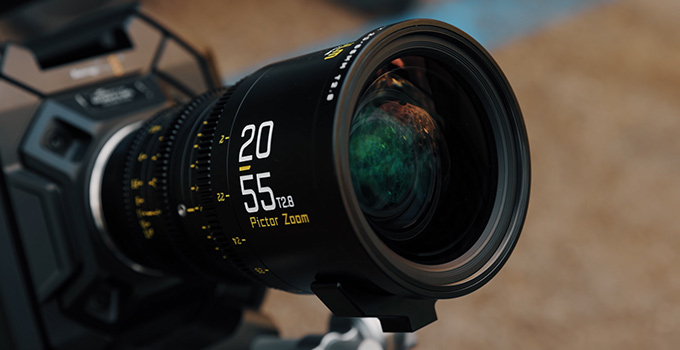One thing that bothers me about this prime lens is the aberration at 25mm. This is something I felt with the ultra wide angle side of the Pictor Zoom as well, but I think it depends on how you interpret it since it can be contained by lens correction. If you can see it as a compromise in this price range, you don’t have to worry too much about it. If you want a lens with no aberrations, you will have to have a heated argument with your wallet. But most of the time, I lose… lol.
I was also concerned about the slight aberration in the 35mm lens, but I think it is acceptable when it is the choice of a DZOFILM cinema lens. It was not only the aberration that bothered me, but also the color blur in the blur of the seat of the counter chair at 25mm and 35mm. In addition, the frame of the sash and the outline of the building in the distance also showed some color bleeding, but this is a characteristic of wide-angle lenses, so you will have to decide for yourself whether this is acceptable or not. This is also a matter of consultation with your wallet, so it is best to make a decision based on your budget and what you want to shoot.
All of the lenses have a sense of unity as prime lenses, and changing the number of lenses does not change the picture or the operability. With the exception of the 90mm lens, all of the lenses are T2.1, and even the T value is the same.

The 90mm macro lens is something special
The 90mm macro lens held a special place in my heart. I liked this one a lot. I like the way the bokeh balls come out in beautiful circles, and the focus breathing that occurs when the camera focuses on the subject is very distinctive, making for an interesting image. Normally, the camera is designed to avoid focus breathing, but I’d like to believe that the camera was designed to bleed… lol. I interpreted this as a positive sign that the camera can be used to create image cuts and portraits.
Also, the focus is very severe, and while I reported on the benefits of the 180° rotation angle in “Trying out the Irix CINE Lens Set”, this time I realized the benefits of the 270° rotation angle in Pictor Zoom. Especially in the distant view, alignment was severe, and there was a return from infinity, which caused me to go too far many times. Even when I thought I had it in focus, it would go too far back, and I would end up being out of focus because I couldn’t stop the camera when it was in focus. This is an important point to be aware of.
Also, since the diameter of the lens is so small, the 270° rotation angle was not a hardship. Since the size of the diameter is related to the width of the rotation angle, I think you should be careful when choosing one. Also, in terms of price, it competes with the Sony SEL90M28 (FE 90mm f/2.8 Macro G OSS) and Canon RF100mm f/2.8 L MACRO IS USM still lenses. However, if you are conscious of the need for a more cinematic look and don’t want to use it with a still camera, the prime lens is an interesting choice.
I was surprised to see the size of the 125mm gimbal. In the case of the KOMODO, if you attach a lens weighing more than 1kg (I haven’t measured exactly), it will be completely front-heavy with the weight of the EF adapter. So a balancer needs to be attached to the back.
The advantage of this prime lens is that it can be mounted without a balancer, just barely. If I wanted to attach the same 90mm equivalent lens without a balancer, I would have to choose a still lens. However, if it is a large lens like the RF85mm f/1.2 L USM, that would not be possible since it weighs about 1.2kg. But you can get autofocus, image stabilization, and overwhelming brightness….
Cinema prime lens with a cinematic flavor
This lens may not be for those who want crisp images like stills, but it is worth a try for those who want to put together a cinematic look. I felt that the makers of this product were aware of the need to make it look more like a movie. This is a cinema lens at the same price as a mid-tier still lens. The size of the lens is comparable to a still lens, making it easy to handle, and if you think of it as an introduction to cinema photography, it may be a good choice. Judging from the above, it is not a bad choice. However, since preferences are clearly defined, I recommend that you check it out in a store before purchasing.
Also, when choosing a cinema lens in the low price range, one is very conscious of the price and is tempted to use overseas online shopping. However, I have not yet been able to solve the problems. If you consider the initial failure of the product as well, it is 100% recommended to buy from an authorized dealer, to avoid wasting your energy.
